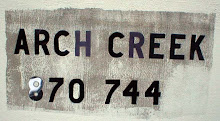 From The New Yorker.
From The New Yorker. My favorite part of “©Murakami,” a retrospective at the Brooklyn Museum of the juggernautish Japanese artist-entrepreneur Takashi Murakami, was the most controversial element in the show when it originated, at the Museum of Contemporary Art in Los Angeles, last October: a functioning Louis Vuitton outlet, smack in the middle of things, selling aggressively pricey handbags and other bibelots, all Murakami-designed. (Vuitton has reportedly done hundreds of millions of dollars’ worth of business in Murakamiana since its deal with the artist began, in 2003.) The shop is lovely. Shelving units in chrome and white enamel, with recessed fluorescent lighting that sets brass fittings on the merchandise aglint, caress the eye. They provide a haven from the strident grotesquerie of what might be termed Murakami’s fine-art product lines: paintings, sculpture, and wallpapered environments that play off the charms of Japanese traditional and popular arts with close to no charm of their own. But, then, retail swank is an aesthetic lingua franca today, and equations of art and commerce, pioneered by Andy Warhol and colonized by Jeff Koons, among others, are, at least, familiar. The show’s less cozy aspects remind me that I have never been to Japan. I don’t like Murakami’s work, but my dislike, being moody, feels out of scale with the artist’s terrific energy and ambition. For the second time in a couple of months—the first being at the Guggenheim retrospective of the meteoric Chinese festivalist Cai Guo-Qiang—New Yorkers have a chance to absorb our new geo-spiritual fate, as provincials in a world of creative paradigms that no longer entreat our favor. That has to be good for us. . . .
(Photo of "My Lonesome Cowboy" not from The New Yorker.)

No comments:
Post a Comment